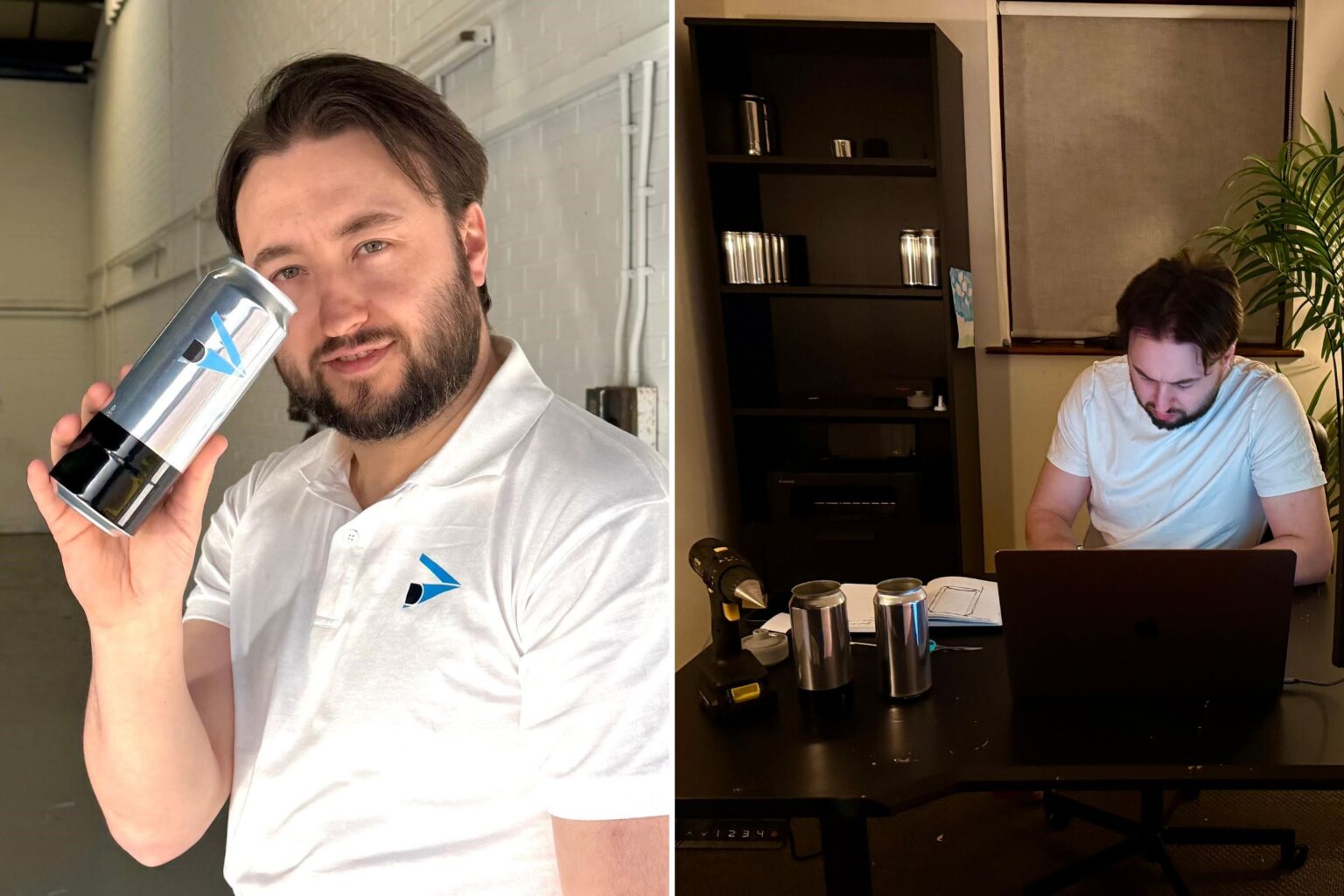A self-taught Welsh inventor may have solved a decades-long problem in beverage technology: how to keep drinks cold without a refrigerator.
James Vyse, a 31-year-old former bartender, developed what he claims is the world’s first commercially viable self-cooling can — and major drinks brands are already paying attention.
“It’s crazy, the people we’re speaking to,” Vyse told Newsweek. “Coca-Cola…Red Bull is another one. AB InBev. Molson Coors.”
AB InBev, otherwise known as Anheuser-Busch InBev, is the largest beer company in the world by revenue and includes brands like Budweiser and Corona.
Between them, AB InBev and Molson Coors brands account for half the top ten list of the most popular beer brands in the U.S., according to data from Statista.
“I find myself on calls till 10 at night these days,” talking to interested parties in the U.S. Vyse added, with a chuckle.
AB InBev and Molson Coors didn’t immediately respond to requests for comment.
Why It Matters
The self-cooling can could have broad implications for drinkers and the planet alike. Vyse’s invention offers a portable solution for keeping beverages cold without the need for power-hungry refrigeration units — a potentially major gain for sustainability.
According to the United Nations, refrigeration accounts for approximately 17 percent of global electricity usage. Reducing this dependency, especially at outdoor events or in regions with limited access to cooling infrastructure, could cut carbon emissions.
What To Know
Dubbed the “Cool Can,” the device resembles a standard 500ml beverage container, though it holds about 350ml of drinkable liquid due to the insulated inner cavity. When a button on the base is pressed, water is released into the surrounding wall, where it reacts with a coolant chemical inside to rapidly chill the can within two minutes, Vyse said.
“If the beverage is warm, then it doesn’t matter how good the liquid is,” said Vyse. ”How come we’re in a world where rockets can be brought back and landed from space, and our cans go warm when you walk 10 minutes away from refrigeration?”
His invention builds on earlier, failed attempts like the ChillCan, a California innovation using pressurized carbon dioxide for self-cooling which garnered attention in the 2010s but never reached commercial scale. Vyse’s version is simpler and cheaper—estimated to add only a few cents more to the price of a drink—and avoids polluting gases.
“I was determined to crack the code, because I’d seen previous attempts and thought surely it’s not that difficult,” Vyse said. “Impossible is not a word I would ever use, because if you say something’s impossible, I’ll make it possible.”
So, Vyse began cutting up aluminum and experimenting, which often left his hands covered in cuts and he told Newsweek there were times when his fingers were completely taped up with his children’s Avengers plasters.
He sifted through information and research to understand how to make the chemical equations work in the can, and 500 prototypes later, he came up with the design and technology of the Cool Can.
“It was about one o’clock in the morning,” Vyse said. “I called up my partner and was like, ‘I’ve done it!'” He added that he didn’t sleep that night and was still awake at 6 a.m. “in awe” of what he’d just accomplished.
It had taken two years of work for him to get to what he described was exactly like the “light-bulb moment you see in the movies.”
Trials are planned in London this summer, and the product is expected to enter mass production within two years.
In addition to Coca-Cola and Red Bull, there is interest in the technology from Carlsberg and Heineken, the latter of which is the fourth most popular beer brand in the U.S.
Coca-Cola, Red Bull, and Heineken didn’t immediately respond to requests for comment. A spokesperson for Carlsberg said they were unable to comment on the brand’s interest in the product at this time.
What People Are Saying
Jonatan Pinkse, a professor of sustainable business at King’s Business School, London, told Newsweek: “From a sustainability perspective, I would say that the product is commendable in showing its green credentials by being fully recyclable.”
However, Pinkse said as the can uses more aluminum than regular cans, given its double aluminum walls, the environmental impact could “be less positive.”
“We know that many cans are not recycled, even if this is possible, and the fact that it needs more aluminum means that it pushes up the environmental impact per can throughout the supply chain,” he said.
Commenting on whether the cans could reduce the energy needed for refrigeration, Pinkse said that while from a consumer-behavior perspective “this is not really credible,” as consumers use their refrigerators for more than cooling drinks, for a supermarket or other shops “energy reductions are possible.”
In places where they have cooled drinks for direct consumption, “making these fridges obsolete by having these cans would have a sustainability benefit,” he said, although he added that there would need to be “a very significant uptake” in the cans for the green benefits to materialize.
What Happens Next
Vyse is finalizing partnerships with drink manufacturers and planning regional pilot programs. His ultimate aim is for the Cool Can to carry a range of beverages — from beer and cider to white wine and cocktails — and be adopted by beverage giants for large-scale distribution by 2026.
Vyse doesn’t plan to stop inventing anytime soon. He said, “We see this very much like the Dyson vacuum cleaner, and now we’re going to invent the hand driers, hair driers and purifiers,” adding that he believed the technology would be transferable to other products.
Read the full article here

